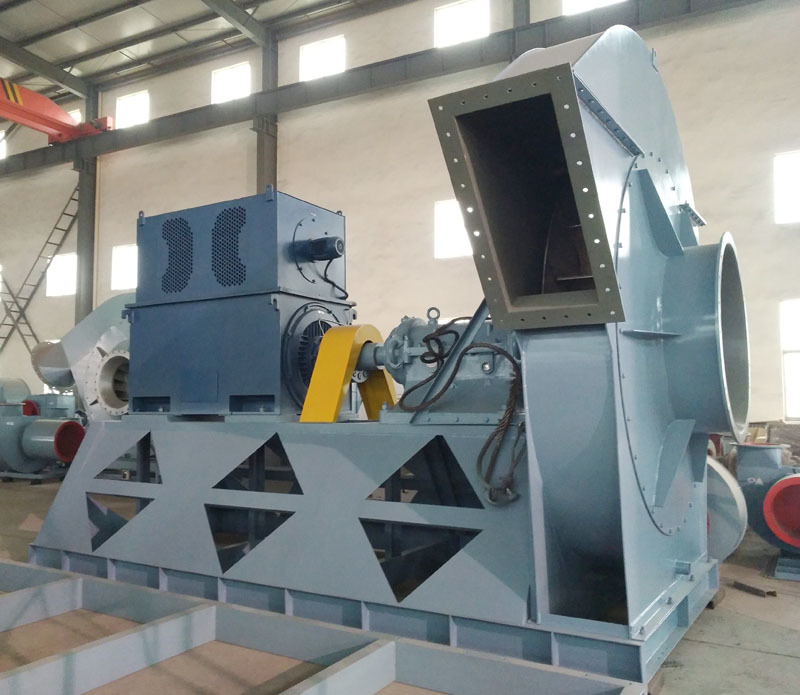What is the function of a fan?
Release time:
2022-01-14
The function of the induced draft fan is to expel the high-temperature smoke generated by the boiler combustion, maintain the furnace pressure, create a flow of smoke, complete the heat exchange between flue gas and air, and stabilize the negative pressure in the flue through the dust collector. Induced draft fans are widely used for ventilation, dust removal, and cooling in factories, mines, tunnels, cooling towers, vehicles, ships, and buildings. They are also used for ventilation and air intake in boilers and industrial furnaces, as well as for cooling and ventilation in air conditioning equipment and household appliances.
What is the function of the induced draft fan?
Induced draft fanis to remove the high-temperature smoke generated by boiler combustion, maintain furnace pressure, create a flow of smoke, complete the heat exchange between flue gas and air, and stabilize the negative pressure in the flue through a dust collector. Induced draft fans are widely used for ventilation, dust emission, and cooling in factories, mines, tunnels, cooling towers, vehicles, ships, and buildings. They are also used for ventilation and air intake in boilers and industrial furnaces, as well as cooling and ventilation in air conditioning equipment and household appliances.

What are the types and characteristics of the fan blades of the induced draft fan?
The blades are classified into radial, forward-curved, backward-curved, and wing-shaped types based on their shape. Radial blades are simple to process but have low productivity and high noise. Forward-curved blades can achieve very high pressure. Backward-curved blades are efficient and produce less noise. Wing-shaped hollow blades make the blade profile more in line with the flow requirements of the body, thus improving efficiency.
Induced draft fanWhat are the characteristics of the adjustable axial flow fan?
(1) The adjustable axial flow fan has a hydraulic adjustment system, which is complex in structure and has a high initial investment.
(2) The efficiency curve of the adjustable axial flow fan is close to an elliptical surface, with the long axis nearly parallel to the resistance curve of the smoke system, resulting in a larger efficient operating area for the fan. The fan consumes less electricity, leading to lower power consumption in factories and lower operating costs.
(3) The pressure coefficient of the adjustable axial flow fan is small, requiring a higher peripheral linear velocity of the rotor to achieve the same wind pressure. As a fan, the airflow containing dust causes more wear on the impeller compared to other types of fans. Without wear-resistant treatment, it can generally only withstand a dust content of 150 m3 (standard condition). To extend the life of the blades, measures need to be taken to spray a wear-resistant layer on the surface of the steel blades. After wear-resistant treatment, the blades can withstand a dust content of 300 to 350 m3 (standard condition).
What are the characteristics of the adjustable axial flow fan of the induced draft fan?Induced draft fanThe characteristics of the adjustable axial flow fan are as follows:
(1) The top blade adjustable axial fan has a relatively simple structure and lower initial investment.
(2) The efficiency curve of the positive blade adjustable axial fan is almost circular, with lower operating efficiency compared to the same type of adjustable axial fan, resulting in higher operating costs.
(3) The rotor peripheral linear velocity of the top blade adjustable axial fan is low, making it more adaptable to dust content, generally around 300 mg/m3 (standard condition).
(4) The top blade adjustable axial fan has a simple structure and requires less maintenance. After significant wear, the guide blades are designed to be removable for easy replacement.
(5) The stall region of the top blade adjustable axial fan is wider than that of other types of fans. When the fan operates with a small air volume, it can pass through the stall region more quickly. Therefore, during peak regulation, long-term operation at low loads may lead to entering the stall region, making surge phenomena more pronounced. However, manufacturers have found ways to install dividers, maintaining fan efficiency under high loads while decreasing efficiency under low loads.
Related News






